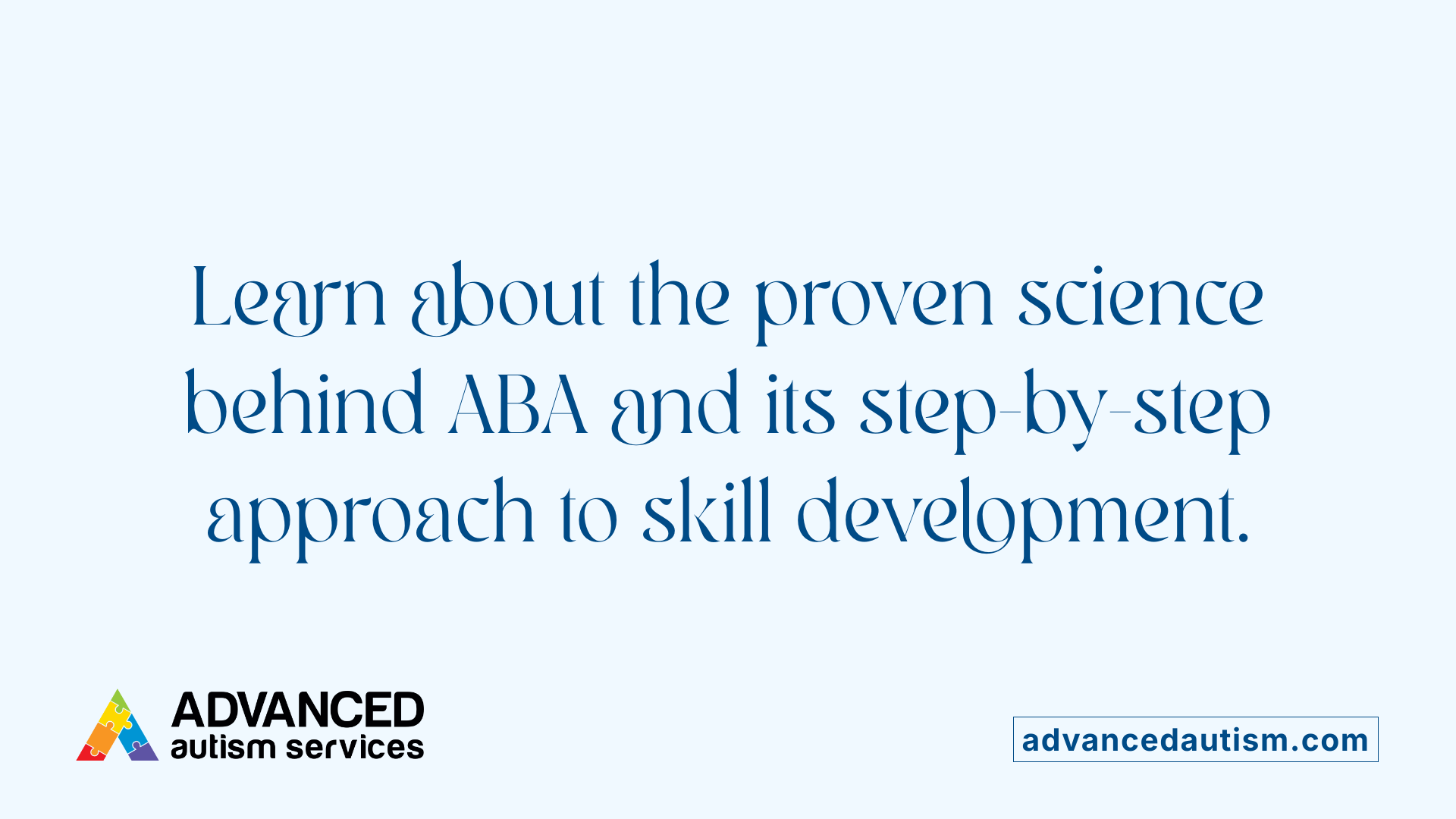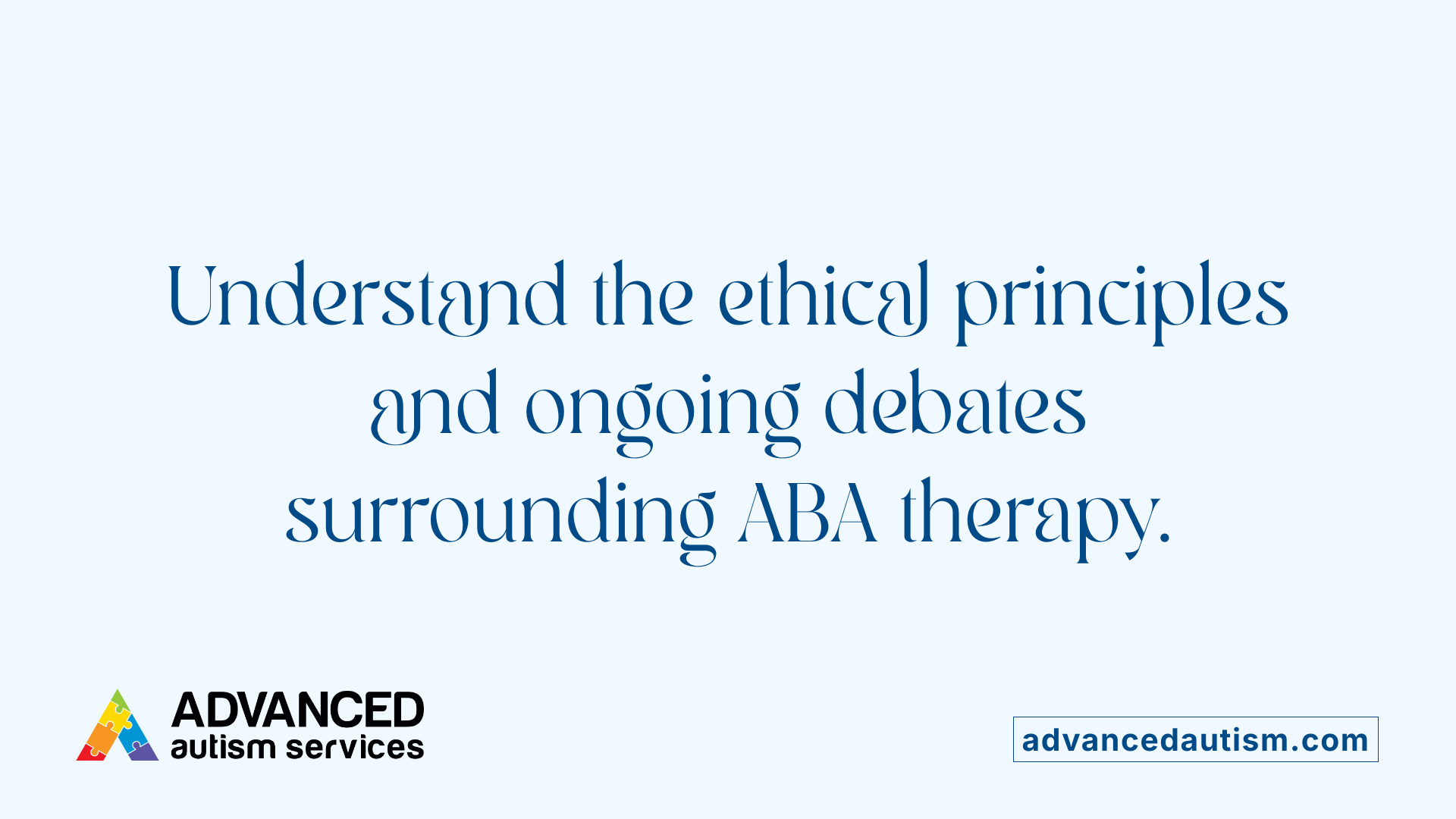Understanding the Foundations of ABA Therapy in Autism Support
Applied Behavior Analysis (ABA) is a well-established, research-backed approach specifically designed to support children with autism spectrum disorder (ASD). Recognized globally as a leading intervention, ABA employs scientific principles of learning and behavior to help children develop essential life skills and reduce problematic behaviors. This article explores the origins, techniques, benefits, and contemporary advancements of ABA therapy, aiming to shed light on its vital role in childhood developmental support, as well as address common criticisms and ethical considerations.
What Is ABA Therapy and How Does It Work for Children with Autism?

What is ABA therapy and how does it work for children with autism?
Applied Behavior Analysis (ABA) therapy is a scientifically proven approach designed to help children with autism develop vital skills and reduce challenging behaviors. Rooted in the science of learning and behavior, ABA uses techniques like positive reinforcement—rewarding desired actions to encourage their repetition—and breaking down complex skills into small, manageable steps.
The core of ABA involves understanding the ABCs: Antecedent (what happens before a behavior), Behavior (the action itself), and Consequence (what follows). By analyzing these elements, therapists can modify environments to promote positive behaviors and diminish unwanted ones.
ABA programs are highly tailored to each child's unique needs. Qualified experts, such as Board Certified Behavior Analysts (BCBAs), assess individual skills and challenges to develop personalized treatment plans. This customization ensures that therapy addresses specific goals, whether that's improving communication, social skills, or daily routines.
Therapies are delivered in various settings, including at home, in schools, clinics, or community locations, making interventions accessible and consistent across different environments.
One key feature is breaking down skills—like toileting, communication, or play—into small steps. For instance, a simple task like greeting others might be taught through successive approximations, rewarding progress at each stage.
Research supports that early, intensive ABA—often more than 20 hours per week—can lead to meaningful developmental improvements. Over time, children learn to participate more independently in daily activities, fostering better communication, social interactions, and adaptive skills.
In summary, ABA combines scientific principles with personalized strategies to help children with autism reach their full potential, making it a cornerstone of autism intervention.
The Benefits of ABA Therapy for Children with Autism

What are the benefits of ABA therapy for children with autism?
ABA therapy offers numerous advantages for children on the autism spectrum. One of its primary benefits is the significant improvement in communication skills. Children often become better at expressing their needs and understanding others, which enhances their social interactions.
In addition to communication, ABA helps develop social skills such as sharing, greeting, and turn-taking. These skills are crucial for forming meaningful relationships.
ABA also focuses on building adaptive and daily living skills, like toileting, dressing, and maintaining personal hygiene. By breaking these skills into small, manageable steps and rewarding each success, children learn independence and confidence.
A core aspect of ABA is reducing problematic behaviors, including aggression, tantrums, or self-injury. Through positive reinforcement, children learn to replace disruptive behaviors with more appropriate responses.
Starting ABA early, preferably between ages 2 to 6, amplifies its benefits. Early intervention can lead to larger developmental gains, particularly in language, socialization, and daily functioning, which can positively affect a child's future independence.
ABA programs are highly personalized and adaptable. Therapists continuously assess progress and tailor activities to each child's evolving needs and preferences, ensuring effective learning experiences.
Research supports that intensive, consistent ABA therapy—ranging from 20 to 40 hours weekly over one to three years—can result in substantial improvements. Many children achieve greater independence, better social participation, and increased cognitive and academic skills.
Overall, ABA is considered an evidence-based approach that significantly supports children with autism by fostering essential skills and reducing behaviors that hinder development, thus improving their overall quality of life and long-term outcomes.
Methods and Techniques Used in ABA Therapy
ABA therapy applies a range of scientifically supported techniques designed to teach new skills and modify behavior effectively. One fundamental approach is positive reinforcement, where desirable behaviors are rewarded to encourage their recurrence. Rewards are carefully selected to match the child's preferences, making learning engaging and motivating.
A core model used in ABA is the ABC model—standing for antecedent, behavior, and consequence. This helps therapists understand what triggers a behavior, the behavior itself, and what happens afterward, allowing targeted interventions to modify problematic behaviors.
Task analysis and chaining are other important methods. Task analysis breaks complex skills into smaller, manageable steps. Chaining links these steps together, gradually teaching the entire skill through successive approximations.
Natural environment teaching focuses on utilizing everyday settings for learning, making skills more generalizable and functional. Visual aids like picture schedules and prompts support children in understanding and completing tasks.
Data collection and progress monitoring are essential to ABA. Therapists track behaviors and skill acquisition with tools such as behavioral charts and assessments. This ongoing measurement helps adapt strategies to the child's evolving needs.
Additional techniques include behavioral modeling and video modeling, which involve demonstrating desired behaviors through live imitation or videos. These visual strategies facilitate learning by providing clear, consistent examples.
Together, these methods work cohesively to promote development in communication, social, self-care, and academic skills, while reducing disruptive behaviors. They are tailored to each child's abilities and are adaptable across various settings like home, school, and therapy clinics.
The Evolution and Recent Developments in ABA Therapy

What is the history and recent development of ABA therapy?
Applied Behavior Analysis (ABA) therapy traces its origins to the early 20th century, rooted in the principles of behaviorism developed by psychologists like John B. Watson and B.F. Skinner. These pioneers laid the groundwork by exploring how observable behaviors can be influenced through reinforcement and environmental modifications.
In the 1960s, Dr. Ivar Lovaas advanced ABA by pioneering intensive early intervention programs specifically for children with autism. His work demonstrated that targeted behavioral techniques could lead to significant improvements in language, social skills, and adaptive behaviors, establishing ABA as a validated treatment approach.
Over time, ABA has shifted from highly structured, repetitive drills to more flexible, naturalistic methods. Modern approaches emphasize play and daily routines, making interventions more engaging and relevant to children’s everyday lives. This evolution aims to help children generalize skills across different settings and activities.
The development of professional standards in ABA is marked by the creation of organizations like the Behavior Analyst Certification Board in 1998, which set ethical guidelines and certification processes for practitioners. These standards focus on delivering safe, effective, and ethically responsible interventions.
Recent advancements include incorporating technology, such as apps and virtual tools, to personalize therapy and facilitate data collection. Additionally, there is a renewed emphasis on involving families actively in the therapy process, respecting individual and cultural differences. Ongoing research continues to refine ABA techniques, demonstrating its effectiveness and broadening its application beyond autism to other developmental and behavioral disorders.
Criticisms, Controversies, and Ethical Considerations in ABA

What are the ethical considerations and criticisms of ABA?
Applied Behavior Analysis (ABA) has been widely recognized as an effective and evidence-based treatment for autism. However, it also faces significant ethical questions and criticisms that have evolved over time.
Historically, some ABA practices included aversive techniques, such as electric shocks or punishment-based strategies, which have been criticized for causing distress and harm. These methods have largely been phased out, replaced by positive reinforcement focused approaches, but their legacy has sparked ongoing ethical debates.
Modern ethical standards emphasize the importance of respecting the rights, dignity, and autonomy of children undergoing therapy. The Behavior Analyst Certification Board (BACB) has established clear ethical guidelines to ensure practitioners prioritize client well-being, obtain informed consent, and maintain professional boundaries.
Critics argue that ABA, especially when applied rigidly, can sometimes infringe on personal freedom, particularly concerning behaviors like stimming, which may be natural ways for autistic individuals to self-regulate. Some worry that the treatment might push children to conform excessively to neurotypical norms, potentially suppressing their natural behaviors and identity.
Furthermore, concerns exist about resource allocation and cultural sensitivity. ABA programs need to be adaptable to individual needs and cultural contexts, respecting diverse backgrounds and values.
Another topic of debate is how to balance the effectiveness of ABA with the child's dignity. While many studies show positive outcomes, critics emphasize the importance of ensuring that interventions do not cause stress or harm.
In response, ethical ABA practice now involves collaborating with families, including autistic individuals when possible, to design personalized interventions that respect their preferences and choices. Continuous professional development and adherence to ethical codes aim to prevent misuse and promote respectful, effective therapy.
Overall, the conversation around ABA's ethics involves safeguarding the rights and well-being of children while recognizing the importance of individualized, respectful treatments that honor neurodiversity.
Scientific Evidence Supporting ABA’s Effectiveness
What scientific evidence supports the effectiveness of ABA therapy?
A substantial body of research confirms that Applied Behavior Analysis (ABA) is an effective treatment for children with autism spectrum disorders. Over the years, numerous studies, including controlled trials and meta-analyses, have demonstrated that ABA can significantly improve various developmental outcomes.
Research consistently shows improvements in areas such as communication, social skills, daily living abilities, and adaptive behaviors. For example, many studies report large effect sizes, indicating meaningful progress when ABA is applied intensively and early in development.
Controlled studies have also shown that ABA helps reduce problematic behaviors like aggression, tantrums, and self-injury. These behavioral improvements are often accompanied by gains in language, cognition, and motor skills.
Early intervention programs, especially those with 25–40 hours per week over one to three years, have been linked with better long-term outcomes. Children who start ABA therapy before age six tend to develop stronger communication and social skills, which can reduce the need for future support.
Overall, scientific literature from the last several decades supports ABA as an evidence-based approach that effectively enhances skills and quality of life for children with autism. Its effectiveness continues to be validated across diverse settings and individual needs.
| Study Type | Focus Area | Key Findings | Notes |
|---|---|---|---|
| Randomized Controlled Trials | Behavioral improvements | Significant gains in language, social, and adaptive skills | Emphasizes early, intensive ABA programs |
| Meta-Analyses | Overall effectiveness | Consistent evidence of positive outcomes across multiple studies | Large effect sizes for communication skills |
| Longitudinal Studies | Long-term benefits | Children show maintained progress years after therapy | Highlights early intervention importance |
| Case Studies | Individual successes | Many children achieve independence and reduced therapy needs | Some variability depending on needs |
This extensive research underscores ABA’s role as a scientifically supported method to help children with autism develop essential skills and reduce undesirable behaviors, with promising long-term outcomes noted in many cases.
Empowering Through Evidence and Compassion
ABA therapy stands as a cornerstone in the landscape of autism support, distinguished by its scientific rigor, personalized approach, and demonstrated outcomes. While ethical considerations and criticisms are important to address, ongoing research and evolving practices emphasize a commitment to respecting individual dignity and fostering independence. As more families and professionals recognize its benefits, ABA continues to adapt, integrating new techniques and technology to meet the diverse needs of children with autism. Ultimately, ABA's goal remains to empower children to reach their full potential, laying the foundation for a more inclusive and understanding society.
References
- Applied Behavior Analysis (ABA) for Children With Autism
- Applied Behavior Analysis (ABA) | Autism Speaks
- Applied Behavior Analysis (ABA) - Cleveland Clinic
- The Controversy Around ABA - Child Mind Institute
- ABA Therapy: Autism Therapy for Your Child - LEARN Behavioral
- Behavioral Management Therapy for Autism | NICHD
- How ABA Therapy Can Improve Your Child's Life
- ABA Support Services



